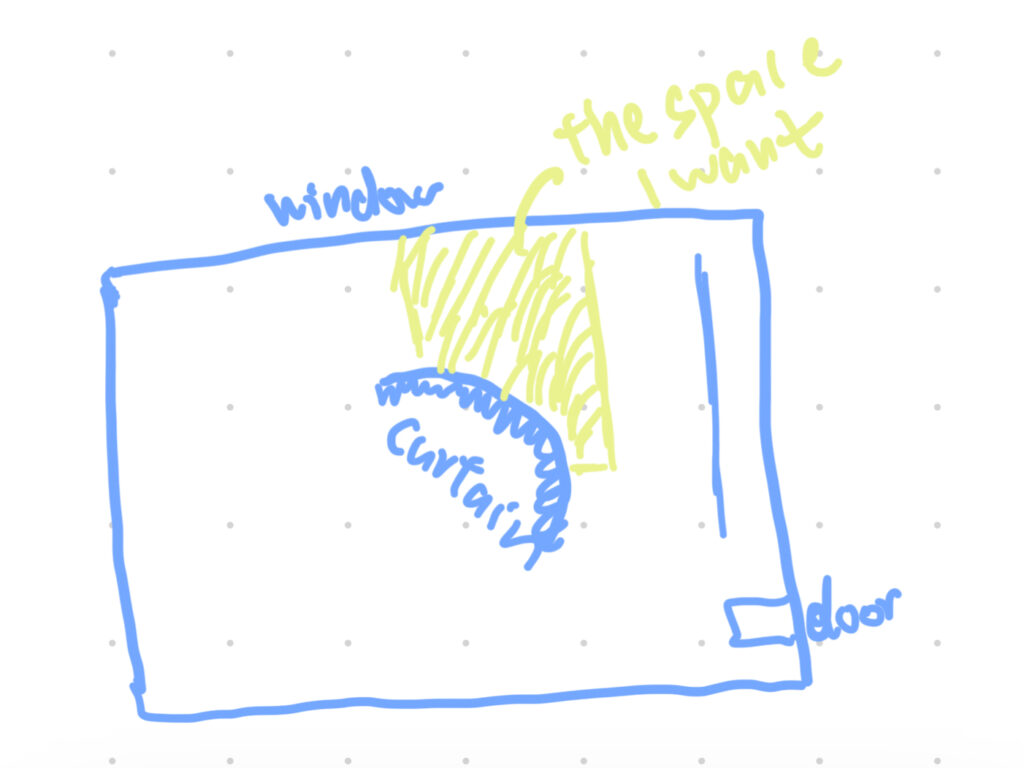cycle one
Posted: March 28, 2024 Filed under: Final Project Leave a comment »For cycle one, i keep my goal simple – to explore and figure out my multiple resources and the combined possibilities of arduino (and sensors), isadora, and makeymakey.
i learned how to connect arduino with isadora, and explored touch-related sensors and actuators. I started with capacitive touch because it can be achieved with just connecting wires to the pins, and doesn’t require me to purchase extra sensors, but it turns out that the fact that it does not give analog output makes it hard to send value to isadora with the Firmata Actor. (while i did find that it could be possible to use serial communication instead of Firmata Actor, but that seems more coding, and I think that’s too much for now, i may return to this in the future). So I decided to use force sensor, flex sensor, and the servo.
I played with layering some videos together (some of the footages i collected), all of them shared something in common (an aesthetic i am looking for) – the meandering/stochastic motion of feral fringe. I tested out some parameters that would allow subtle change to the visual. Then i tried send the value from my sensor to affect the subtle changes.

some tutorials that i find helpful:
(thanks Takahiro for sharing this about Firmata in his blog post!):
https://www.instructables.com/Arduino-Installing-Standard-Firmata/
https://www.instructables.com/How-To-Use-Touch-Sensors-With-Arduino/
https://docs.arduino.cc/learn/electronics/servo-motors/
Force sensor: https://learn.sparkfun.com/tutorials/force-sensitive-resistor-hookup-guide/all
Flex sensor: https://learn.sparkfun.com/tutorials/flex-sensor-hookup-guide/all
I was also thinking about the score for audience, that supports the intention of [shared agency, haptic experience (with the wires as well), subtle sensations], and I really love the sensation of the wires dangling and twitching like tentacles ~ i would love for people to engage with it:
In pairs, one person will close eyes, the other person will guide them in the space. While roaming around in the space, eye-closed person will explore the space with touch, which then affects visuals/sounds/sensations in the space.
This source from an activity we did in Mexico, also i find another artist did something similar. i find this audiencing quite effective in the sense that, eye-closed enables that people don’t select and manipulate the object by judging its appearance or functions, which makes new “worlding” happen. And, with eyes closed, there is an extra layer of care in our touch and pace. This also resonates with what i studied in dance artist Nita Little’s theory of “chunky attention” versus “thin-sliced attention”. With eyes closed, we don’t come to recognize a thing as a chunky whole thing and assume we already know it, but we are constantly researching every bit of it as our touch goes through it. With the pair format, we are also constantly framing the “scene” for each other.
Envisioning space use for final cycle:
– in molab
– a projector (i am thinking of using my own tiny projector, because it’s light and easy to move, i probably wanna audience to play with touch/move that as well)
– space wise, i am thinking that part where the curtain track goes out (see sketch below, the light green area), but i am also flexible. with the next circles, i need to test out how to hook my wires, how long the power cable would be in order to figure out the realistic spacial design…
